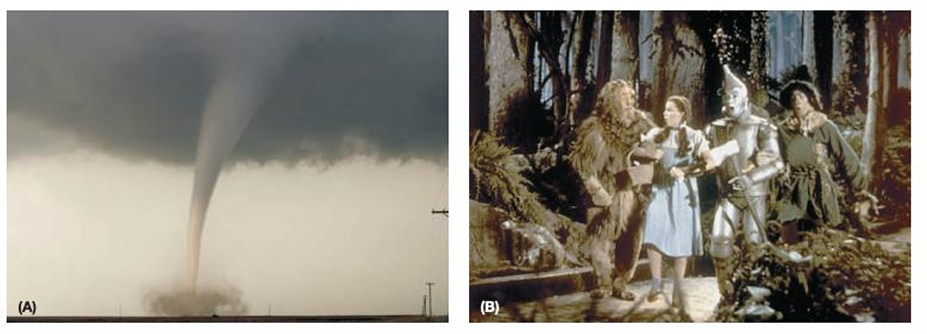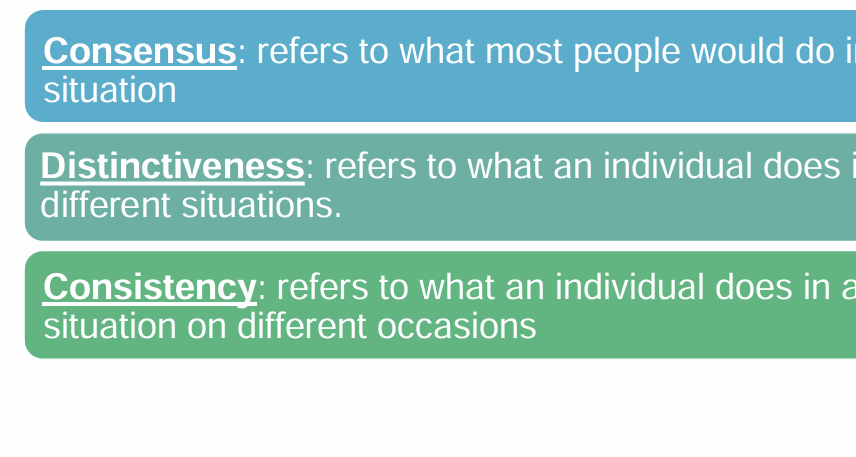Lectures 5-6 Social Cognitions and Attributions
1/26
There's no tags or description
Looks like no tags are added yet.
Name | Mastery | Learn | Test | Matching | Spaced |
|---|
No study sessions yet.
27 Terms
social cognition
The study of how people think about the social world and make decisions about socially relevant events
social cognition: Why can’t we make perfect rationale decision (cognitive misers)
In order to make a perfect decision (to be completely rational), we need accurate, useful information and complete mental resources
But there are 2 conditions that inhibit this:
1. No one has an all-knowing, “God’s eye” view of the world
2. Even when we have adequate information, we do not have unlimited time and energy to analyze every problem
Cognitive misers: People look for ways to conserve cognitive energy by attempting to adopt strategies that simplify complex problems (heuristics)
dual process theory
System 1: Automatic processing; fast, intuitive, emotional
System 2: Controlled processing; slow, deliberate, logical
system 1 vs system 2
• Rational system (System 2): Unfamiliar tasks, tasks with a clear right answer, solving unexpected problems, goal pursuit
• Intuitive system (System 1):
Complex decisions: Dijksterhuis (2004) decision studies
Creativity: Mind-wandering promotes creative insight
heuristics: availability heuristic
When we judge the frequency or probability of some event by how readily pertinent instances come to mind.
Can lead to biased assessments of risk
• Bad news bias: Overestimation of the frequency of dramatic events
ex: overestimated bias: all accidents, motor vehicle accidents, tornadoes, flood, cancers, fire, homicide

heuristics: Representative heuristic
when we try to categorize something by judging how similar it is to our conception of the typical member of the category
Ex: Who is the prototypical Asian?
information presentation: halo effect
We tend to generalize our broad impressions to specific qualities about a person
information presentation: primacy effect (order effects)
information presented first has the most influence
In Social Psychology:
Early information shapes our overall impression more strongly than later info.
Once we form an initial impression, we tend to interpret new info in a way that confirms it (confirmation bias).
Example:
If you first hear someone is “intelligent, hardworking, and a bit arrogant,” you’re more likely to view them positively than if you first heard “arrogant, impatient, but intelligent.”
information presentation: recency effect (order effects)
information presented last has the more influence
In Social Psychology:
Happens especially when we’re distracted, tired, or haven’t made up our minds yet.
Newer info can override older info if it’s fresh or emotionally impactful.
Example:
If a patient seemed rude earlier but is now calm and cooperative, a healthcare provider might base their judgment more on the recent behavior
information presentation: framing effect
The way info is presented can “frame” the way its processed and understood
• Primacy and recency effect = type of framing effect
Spin-framing: Varies the content of what is presented
E.g., “illegal aliens” vs “undocumented workers”
E.g., ”torture” vs “enhanced interrogation”
E.g., “war department” vs “defense department
information presentation: Positive/ Negative framing
cognitive bias where the way information is presented—as a gain (positive) or a loss (negative)—influences decision-making, even when the facts are the same.
ex: Imagine a treatment for a disease is described in two ways:
Positive frame: "This treatment has a 90% survival rate."
Negative frame: "This treatment has a 10% mortality rate."
seeking information: Confirmation bias
In the social realm
• We often ask questions that will provide support for what we want to know
• Engage in a biased search for evidence
Information that supports what we want to be true is easily accepted; info that contradicts what a person would like to believe is often discounted
seeking information: bottom up processing
“data-drive” mental processing
An individual forms conclusions based on the stimuli encountered in the environment
seeking information: top down processing
“theory-driven” mental processing, where an individual filters and interprets new info in light of preexisting knowledge and expectations.
seeking information: assimilation
Interpreting new information in terms of existing beliefs. Expectations influence information processing. We see what we expect to see.
• ex: Hastorf & Cantril (1954) – Princeton-Dartmouth football game
Fans from Princeton and Dartmouth both watched the same game, but they interpreted events differently.
Each group assimilated the rough plays and penalties into their existing belief:
“Our team is fair; the other team is dirty.”
Instead of adjusting their beliefs based on the game footage (which would be accommodation), they fit the new information into their existing framework—that their team was in the right.
seeking information: belief perseverance
Persistence of one’s initial conceptions, even in the face of opposing evidence.
• Andersen et al. (1980) - Firefighter study
Participants read that either risk-taking or cautious firefighters performed better.
Later, they were told the info was made up—but they still believed what they first read.This shows belief perseverance: people stick to initial beliefs even after learning they’re false.
seeking information: false consensus
We tend to overestimate how much other people agree with us, especially when it comes to undesirable or questionable behaviors.
Undesirable? Consensus.
ex: "Everyone cheats a little on tests—it’s normal."
This is often used to justify bad behavior by assuming it's common.
seeking information: false distinctiveness
We tend to underestimate how common our positive traits or behaviors are, believing we’re more unique than we really are.
Desirable? Distinctiveness
ex: "I’m one of the few people who really cares about the environment."
This helps boost self-esteem by making us feel special.
self cognitions: egocentric bias
Tendency to focus on ourselves.
• Better memory for personally-relevant information
• Spotlight effect: people tend to overestimate how much others notice or pay attention to their appearance, behavior, or mistakes.
liking gap
After conversations, people underestimate how much their conversation partner likes them.
Boothby et al. (2018): Thoughts about own conversational performance were more negative than partner’s thoughts
thought gap
After conversations, people underestimate how much their conversation partner thinks about them (relative to the reverse).
Examples:
You think you came across as confident in a group presentation, but others saw you as cold or arrogant.
→ That’s a thought gap between your internal experience and others’ perception.A doctor believes they showed empathy during a patient consultation, but the patient feels rushed and misunderstood.
→ Another thought gap—common in healthcare communication.
causal attributions
Explanations people use for what caused a particular event or behavior.
Ex: Professor to student: “That’s a good point!”
Students: Was it really though? Did she just want to encourage participation?
causal attributions: Disposition attribution
when we explain someone’s behavior by attributing it to their internal characteristics—such as their personality, motives, attitudes, or abilities—rather than to external circumstances.
Examples:
If someone cuts you off in traffic, you might think, “They’re a rude and aggressive person” (dispositional), rather than considering that they might be late for an emergency (situational).
If a doctor seems impatient with a patient, a dispositional attribution would be, “She’s just cold and lacks empathy,” instead of “She’s under a lot of stress today.”
causal distributions: situational attribution
This occurs when someone assumes that a person's actions are due to the situation they are in, rather than their personality or character.
Examples:
If a nurse is short with a patient, a situational attribution might be: “She’s probably overworked or dealing with a difficult shift.”
If someone doesn’t respond to a greeting, you might think, “Maybe they didn’t hear me,” rather than assuming they are unfriendly
causal attributions: covariation principle
It explains how people determine whether a person's behavior is caused by internal (dispositional) or external (situational) factors.
• People determine locus of causality in terms of things that are present when the event occurs but absent when it does not.
Consistency across situations and time = dispositional
Consistency across people, not situations and time = situational
consensus- Do other people behave the same way in this situation?
distinctiveness- Does this person behave differently in other situations?
consistency- Does this person always behave this way in this situation?

attribution errors: correspondent inference
This refers to the tendency to conclude that a person’s behavior reflects their stable, internal traits (dispositional attribution)—even when the behavior could be explained by the situation.
Also called the fundamental attribution error
Example:
If a doctor speaks bluntly to a patient with a disability, someone might infer:
“That doctor is insensitive.”
Even though it might have been due to time pressure or miscommunication (a situational factor).
Cultural differences:
Collectivistic cultures = more situational attributions
Lower socioeconomic status = more situational attributions
Dispositional attribution vs corresponding inference
This is a broad explanation for behavior based on internal traits, personality, motives, or intentions.
We use it to explain why someone behaved a certain way:
“She was rude because she’s an impatient person.”
✅ It’s about general internal causes.
This is a specific type of dispositional attribution—it’s when we assume that a person’s behavior directly reflects their true character or intent, even when the behavior could have been influenced by the situation.
Introduced by Jones and Davis (1965).
It's about whether the behavior "corresponds" to a stable trait.
It's most likely when the behavior is freely chosen, unexpected, or has unique effects.
“She chose to speak harshly even though she didn’t have to—that must mean she’s naturally mean.”
✅ It’s about inferring a trait from a specific behavior, often ignoring situational influences.